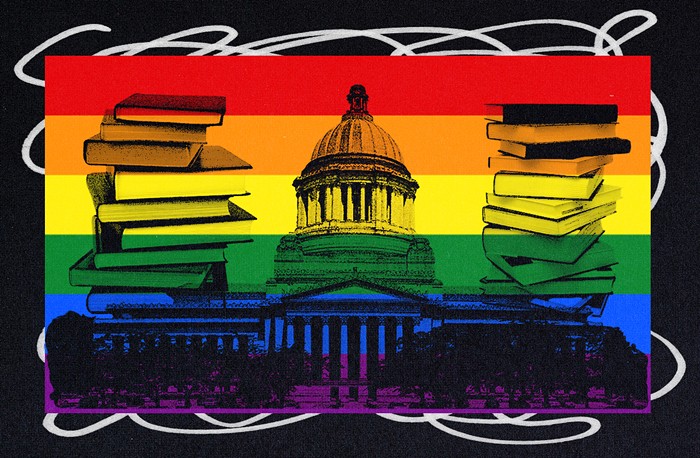Steve Breaux works for WashPIRG, an environmental and public-interest advocate.
Last Thursday morning’s news of a $1.4 billion revenue shortfall didn’t really come as much of a surprise to anyone, and I’m beginning to feel like I’ve seen this movie before. It’s like a tragic version of Groundhog Day: Write a budget that relies disproportionally on cuts to public services while ignoring the potential of raising significant revenue; watch as the economy fails to create any new jobs regardless of how many tax exemptions you maintain for the "job creators"; wait for a revenue forecast that sucks; pass a supplemental budget that relies on even more cuts but still ignores loopholes that cost the state much-needed revenue; rinse and repeat.
Following the revenue forecast, Rep. Ed Orcutt (R-Kalama) told reporters in Olympia that “once we get Washington working again, then we’ll see the revenue coming in” and issued a press release claiming that “continuing budget shortfalls will disappear when Washingtonians find jobs again.” It’s unfortunate that jobs weren’t a priority when he and his colleagues balanced the budget by laying off state employees and slashed funding to local governments that employ teachers, firefighters, cops, and healthcare providers for our state’s most needy citizens. To some extent, however small, our falling revenues reflect reduced consumer spending by those newly unemployed workers.
Orcutt also believes that “we have to implement policies that spur the private sector to create more jobs.” Unfortunately, that’s exactly how our state ended up with hundreds of loopholes in its tax code. But how many jobs does a tax exemption on Botox create? Does a tax exemption on membership fees to golf and country clubs really spur jobs for caddies and greens-keepers? Would our state poultry industry suffer if we eliminated an exemption on bedding materials for chickens?
Over the course of decades, successive Legislatures have provided various tax exemptions to businesses under the assumption that these would stimulate economic activity or create jobs. Once in place these exemptions are seldom audited to check their effectiveness, yet we keep paying the price in lost revenue.
Among the dozens of exemptions, these big ticket items siphoned away about $297 million in precious dollars every year:
· Special tax break for private jets: $5 million
· Sales tax break for elective cosmetic surgery: $8 million
· Sales tax break for fertilizer: $40 million
· Sales tax break for out-of-state shoppers: $44 million
· Tax breaks for Wall Street banks: $100 million
· Sales tax break for consumer services: $100 million
Taken individually, each of these is just a drop in the bucket compared to a $1.4 billion revenue shortfall; collectively, they amount to revenue that could prevent further cuts to programs that are crucial to millions of Washingtonians—and that’s just the immediate impact. Over time, that revenue could actually restore funding to employ teachers, firefighters, cops, and health care providers for our state’s most needy citizens.
Unless legislative leaders expect the revenue situation or economic outlook to change dramatically anytime soon, they should act immediately to put ending unfair tax breaks at the top of their agenda—if not on their own, then via a referendum to the people.


















